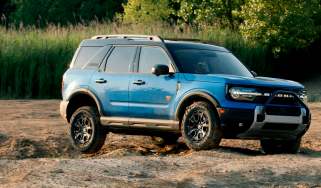The Highway Code: What is it and how do I learn it?
What you need to know about the Highway Code, where to find it and how to use it to pass your driving test
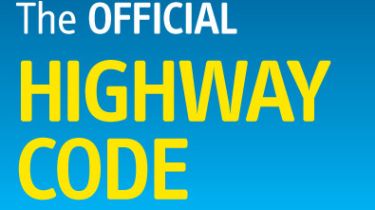
The Highway Code is a compilation of rules, regulations and guidelines that every road user must follow in order to drive safely and lawfully in the UK.
First introduced in 1931, the Code is regularly updated to reflect changes to the roads and the vehicles using them. Road users in England, Scotland and Wales all follow the same version of the Highway Code, while Northern Ireland’s differs slightly.
The Highway Code is put together by the Driving Standards Agency and the Department for Transport. It’s an essential read for motorists and is essential to learn prior to taking both the driving theory test and the practical driving test. These rules don't just apply to car drivers, they also apply to other road users including pedestrians, cyclists, horse riders and mobility scooter users.
A major Highway Code update in 2022 saw the introduction of the ‘Hierarchy of Road Users’. This resulted in a number of rule changes designed to improve the safety of those deemed most at risk in the event of a collision. The hierarchy considers pedestrians, cyclists, horse riders and motorcyclists to be the most vulnerable, with children, older adults and disabled people being more at risk.
If you’re learning to drive you should be familiar with the Highway Code as it plays a significant role in the process of getting on the road. When taking the theory test, many of the questions asked are things you learn directly from the Highway Code. Similarly the practical test will be very difficult to pass without a working knowledge of it and driving testers will pull you up if you’re not driving within the rules of the road.
Once you’ve got your licence, you must still keep your Highway Code knowledge up to date. Every road user has a responsibility to know the rules, and frequent revision is strongly recommended. Failing to keep up to date with Highway Code changes and behaving incorrectly on the road can lead to being pulled over by the police and potentially fined.
What's in the Highway Code?
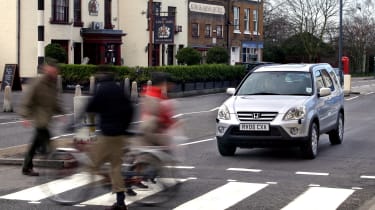
The Highway Code book is full of useful road-related advice, as well as the legal requirements and prohibited actions on Britain's highways. Here's a simple summary of the contents:
- Rules for pedestrians
- Rules for users of powered wheelchairs and powered mobility scooters
- Rules for horse riders
- Rules for cyclists and motorcyclists
- Rules for car, van and lorry drivers
- General advice on topics such as weather, parking, motorways, road works and level crossings
- Road signs and markings, with their meanings
- Signals from authority figures and other road users
- Driving in adverse weather conditions
- Licence and riding/driving requirements
- The law and penalties for breaking it
- Vehicle maintenance, safety and first aid advice
In order to understand whether a rule in the Highway Code is law or just safe driving etiquette you need to look out for the following phrases. If you see the words 'Must/Must not' then these should be taken as one of the laws of the roads, and will result in prosecution if not followed properly.
However, when you spot the phrases 'should/should not' or 'do/do not' then these are not themselves laws and won’t result in prosecution, but if you don’t follow these and it results in an accident, they could be used as evidence in court to establish liability.
Updated Highway Code rules
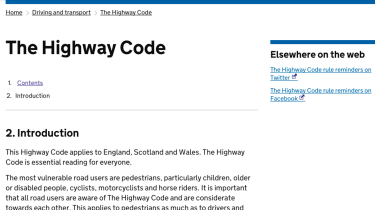
There were some significant rule changes introduced into the Highway Code on 29 January 2022. Called the ‘Hierarchy of Road Users’, perhaps most significantly, pedestrians now have priority when crossing road junctions, while cyclists have priority when passing a turning car.
Here’s a simplified version of the rules that were introduced:
- Rule H1 - Drivers of vehicles that can cause the greatest harm in the event of a collision bear the greatest responsibility to reduce the danger to others. This applies most strongly to HGV drivers, LGVs, cars/taxis and motorcycles. Cyclists and horse riders also have a responsibility to reduce danger to pedestrians.
- Rule H2 - At a junction, drivers, motorcyclists, horse riders and cyclists should give way to pedestrians crossing or waiting to cross a road which you are turning in to or out of. You should give way to pedestrians waiting to cross a zebra crossing (previously, you only had to give way if they were already on the crossing), and to pedestrians and cyclists waiting to cross a parallel crossing.
- Rule H3 - You should not cut across cyclists, horse riders or horse drawn vehicles going ahead when you are turning into or out of a junction or changing direction or lane. This applies whether they are using a cycle lane, a cycle track, or riding ahead on the road and you should give way to them. Do not turn at a junction if to do so would cause the cyclist, horse rider or horse drawn vehicle going straight ahead to stop or swerve. You should stop and wait for a safe gap in the flow of cyclists if necessary.
Learning the Highway Code: top tips
Learner drivers will be very familiar with the Highway Code - and it's certainly a massive help when taking the theory and practical driving tests - but it can be hard to remember all of those rules. Here are a few handy hints to help make learning the Highway Code easier.
- Download a Highway Code app - These should include the full contents, and may also feature quizzes and other learning tools that can track your progress and test your knowledge.
- Listen to the Highway Code audiobook - listening to the audio version on your headphones lets you get on with other tasks, and you can test yourself on what you've learned afterwards.
- Find an online Highway Code quiz to test your knowledge - try reading through the book and taking a different quiz every day to make sure you've covered everything.
- Get a friend to test you on specific subjects - like roundabouts, road markings or signs.
Where to read the Highway Code
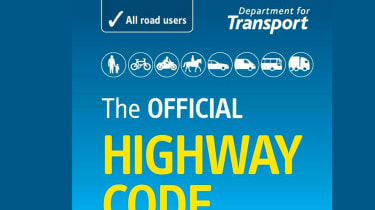
Highway Code books are still published by the Department for Transport, and these can be found in most bookshops and online outlets. Some other publishers, such as the AA, also offer their own versions. Alternatively, there are also many online resources also available, several of which are free.
Here’s a summary of different ways to read the Highway Code:
- Buy a physical paper copy.
- Buy an eBook for your preferred device.
- Download a Highway Code app.
- Listen to an audiobook.
- Download a .PDF version (these are usually free).
- Read an online version (we recommend using the official UK Government website)
- Print the Highway Code from an online source.
- Visit your local library and borrow a copy.
Frequently Asked Questions
Yes, free .PDF copies of the Highway Code can be found online. If you are downloading one of these, be sure to double check that it is up-to-date and from a reputable source.
First Cars on Auto Express...
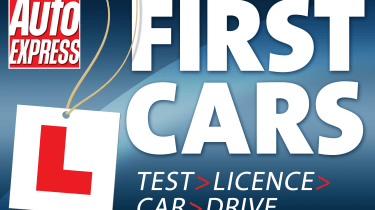
Everything you need to know about learning to drive, getting your driving licence and choosing your first car...
Learning to drive
Passing your driving test
- Driving theory test: everything you need to know
- Hazard perception test: what to expect and how to pass
- Driving test 'show me, tell me' quesions: hints and tips
- Practical driving test: how to pass
- Driving test pass rates explained
- Driving test aids product test
- History of the UK driving test
Getting your first car
Find a car with the experts



